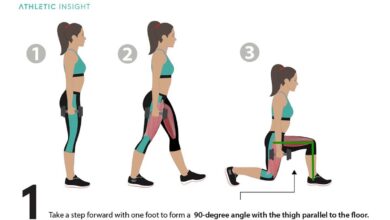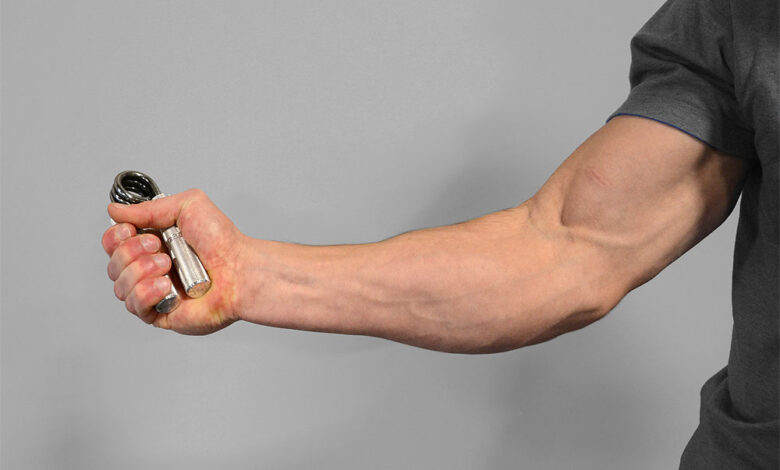
Why Grip Strength Matters to Your Health
Why grip strength matters to your health? It might seem like a simple thing, but your grip strength is a powerful indicator of overall health and well-being. It’s a fundamental aspect of daily life, from opening jars to carrying groceries, and it plays a crucial role in maintaining physical independence as we age.
Research has shown that grip strength is closely linked to cardiovascular health, muscle mass, and even mental well-being. Stronger grip is associated with a lower risk of heart disease, higher muscle mass, and better cognitive function. This article explores the compelling reasons why you should prioritize grip strength training and the steps you can take to improve it.
The Importance of Grip Strength
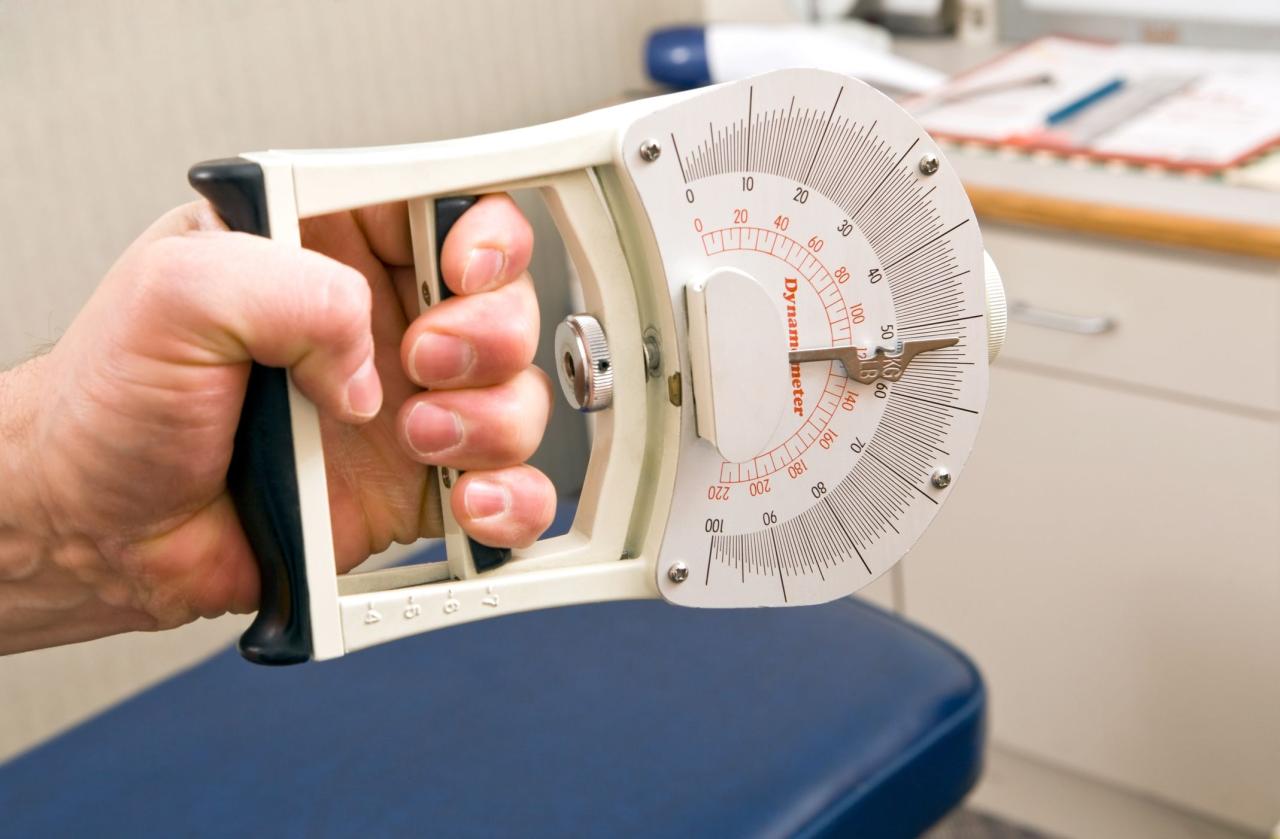
Grip strength is more than just the ability to hold onto something. It’s a fundamental aspect of overall health and well-being, playing a crucial role in our daily lives and impacting our physical independence as we age.
Daily Activities Relying on Grip Strength
Grip strength is essential for performing everyday activities. Many tasks we take for granted, like opening jars, carrying groceries, and using tools, require significant grip strength. Without adequate grip strength, these simple actions can become difficult and even impossible, leading to frustration and dependence on others.
- Opening jars and bottles:This common task requires a strong grip to twist and open containers, which can be challenging for individuals with weakened grip strength.
- Carrying groceries:Lifting and carrying grocery bags, especially heavy ones, requires a strong grip to prevent dropping or straining the wrist and arm.
- Using tools:From simple tools like screwdrivers and hammers to more complex ones like gardening tools and kitchen appliances, using tools effectively requires a firm grip.
- Dressing and undressing:Buttoning clothes, zipping zippers, and fastening buckles all require a degree of grip strength, especially for individuals with arthritis or other conditions affecting hand dexterity.
- Writing and typing:Holding a pen or typing on a keyboard requires a stable grip to control the instrument and produce legible writing or accurate typing.
Grip Strength and Physical Independence
As we age, maintaining grip strength becomes increasingly important for preserving our physical independence. A strong grip allows us to perform everyday tasks without assistance, reducing the risk of falls and maintaining our ability to live independently.
“Grip strength is a powerful predictor of overall health and mortality. It is a reliable indicator of functional capacity and independence.”
Studies have shown a strong correlation between grip strength and overall health, with weaker grip strength associated with an increased risk of falls, disability, and mortality. Conversely, maintaining grip strength can help us stay active, independent, and live healthier lives.
Grip Strength and Cardiovascular Health
It’s often said that our hands reveal a lot about us, and it turns out that’s not just a figure of speech. Grip strength, a seemingly simple measure of hand muscle power, has emerged as a powerful indicator of cardiovascular health.
While it might seem surprising, research has consistently shown a strong link between weak grip and an increased risk of heart disease and other cardiovascular problems.
The Link Between Grip Strength and Heart Health
Numerous studies have uncovered a compelling relationship between grip strength and heart health. These studies have consistently demonstrated that individuals with weaker grip strength are more likely to experience heart-related issues. The association between grip strength and cardiovascular health has been observed across diverse populations and age groups, making it a robust and reliable indicator.
Grip Strength as a Predictor of Cardiovascular Disease Risk, Why grip strength matters to your health
Beyond merely reflecting existing cardiovascular health, grip strength has proven to be a powerful predictor of future cardiovascular disease risk. This means that a weak grip can be a warning sign, even in individuals who haven’t yet experienced any heart problems.
The predictive power of grip strength is especially significant because it is a readily accessible and inexpensive measure. It can be easily assessed using a handgrip dynamometer, a simple device that measures the force exerted by a person’s hand. This makes it a valuable tool for identifying individuals at risk of cardiovascular disease, allowing for early interventions and preventive measures.
Correlation Between Grip Strength and Heart Health Outcomes
The following table summarizes the correlation between grip strength and various heart health outcomes based on numerous studies:
| Heart Health Outcome | Correlation with Grip Strength |
|---|---|
| Heart Attack | Inversely correlated; weaker grip strength associated with increased risk |
| Stroke | Inversely correlated; weaker grip strength associated with increased risk |
| Heart Failure | Inversely correlated; weaker grip strength associated with increased risk |
| All-Cause Mortality | Inversely correlated; weaker grip strength associated with increased risk of death |
Grip Strength and Muscle Mass
Grip strength is a reliable indicator of overall muscle mass, and maintaining muscle mass is crucial for maintaining good grip strength. This section explores the relationship between grip strength and muscle mass, emphasizing the benefits of maintaining muscle mass for both grip strength and overall health.
The Relationship Between Grip Strength and Muscle Mass
Individuals with higher muscle mass generally have greater grip strength. This correlation is particularly evident in the upper body, where muscles like the biceps, triceps, forearms, and back contribute significantly to grip strength. For instance, a study published in the “Journal of Strength and Conditioning Research” found a strong positive correlation between grip strength and lean body mass in men and women.
- Grip strength is a good indicator of overall muscle mass.This is because grip strength is directly related to the strength of the muscles in the hand, forearm, and upper arm. These muscles are essential for performing everyday activities, such as opening jars, carrying groceries, and lifting objects.
- Muscle mass can influence grip strength.As muscle mass increases, so does grip strength.
This is because larger muscles are capable of generating more force.
- Grip strength can also influence muscle mass.This is because grip strength exercises can help to build muscle mass in the hands, forearms, and upper arms.
The Importance of Maintaining Muscle Mass for Grip Strength
Maintaining muscle mass is essential for maintaining good grip strength, especially as we age.
- Muscle mass naturally declines with age.This decline, known as sarcopenia, can lead to a decrease in grip strength, making it harder to perform everyday activities.
- Maintaining muscle mass can help to prevent age-related decline in grip strength.By engaging in regular strength training, we can help to maintain or even increase muscle mass, which in turn can help to maintain or improve grip strength.
- Maintaining muscle mass is crucial for overall health.Muscle mass plays a vital role in maintaining bone density, improving balance, and reducing the risk of falls.
Benefits of Maintaining Muscle Mass for Grip Strength and Overall Health
Maintaining muscle mass offers numerous benefits for grip strength and overall health.
- Improved grip strength, making it easier to perform everyday activities, such as opening jars, carrying groceries, and lifting objects.
- Increased functional capacity, making it easier to perform activities of daily living and participate in physical activities.
- Enhanced metabolism, leading to better weight management and reduced risk of chronic diseases.
You might be surprised to learn that grip strength is a powerful indicator of overall health, even impacting your ability to perform everyday tasks. Building strong hands can be as simple as incorporating nutrient-rich foods into your diet, like the fresh vegetables found in delicious diets and recipes for meal worthy salads.
The vitamins and minerals in these salads help support muscle growth and repair, which can lead to increased grip strength and a better quality of life.
- Improved bone health, reducing the risk of osteoporosis and fractures.
- Reduced risk of falls, improving balance and stability.
- Improved cognitive function, enhancing memory and attention.
- Increased longevity, promoting overall health and well-being.
Grip Strength and Age-Related Decline
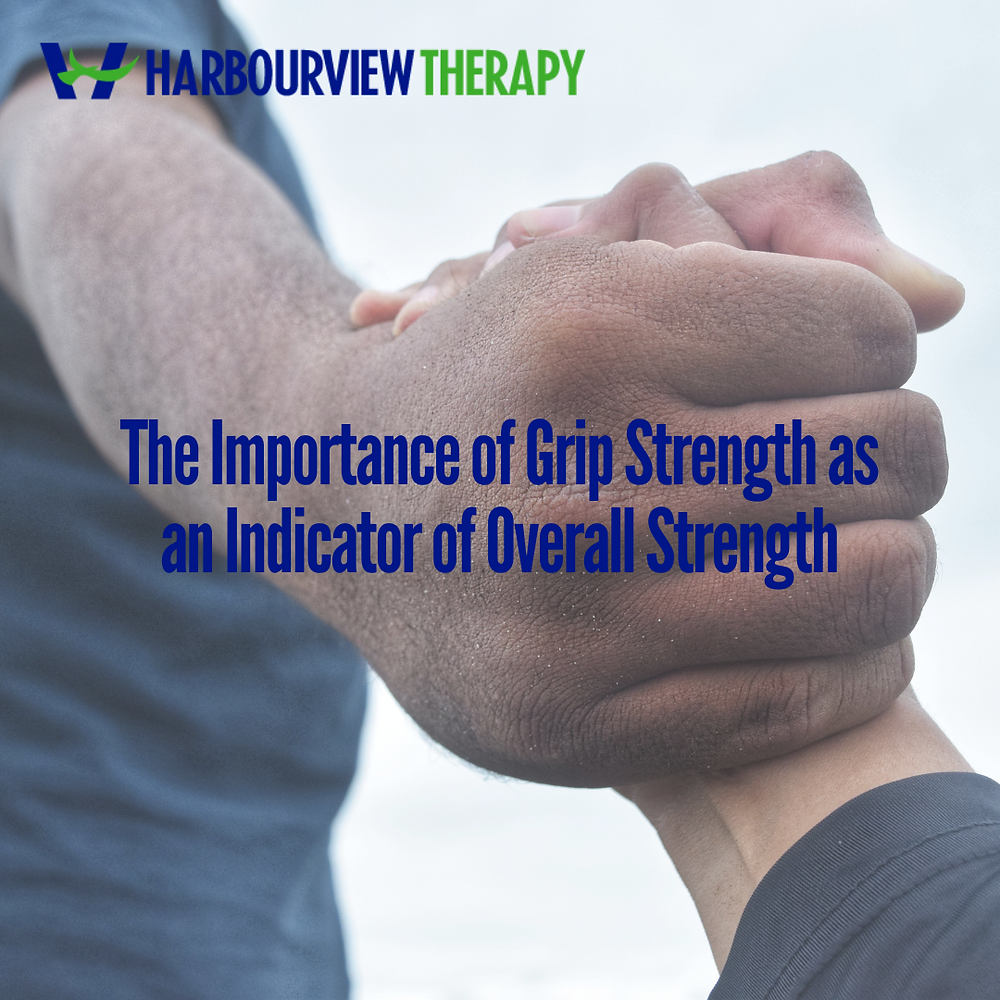
Grip strength, a measure of the force you can exert with your hand, naturally declines with age. This decline is a normal part of the aging process and is influenced by factors like muscle mass loss, reduced nerve function, and changes in bone density.
However, understanding the implications of this decline and taking steps to mitigate it is crucial for maintaining overall health and well-being.
Grip Strength Norms Across Age Groups
Grip strength norms provide a benchmark for comparing individual strength to a general population. Here’s a table showing average grip strength values for different age groups:| Age Group | Average Grip Strength (kg) ||—|—|| 20-29 | 45-55 || 30-39 | 40-50 || 40-49 | 35-45 || 50-59 | 30-40 || 60-69 | 25-35 || 70+ | 20-30 | Note:These are just average values, and individual grip strength can vary significantly.
Maintaining Grip Strength with Age
Maintaining grip strength as we age is crucial for several reasons. It contributes to overall physical function, independence, and quality of life. Weak grip strength can lead to difficulty performing everyday tasks like opening jars, carrying groceries, and dressing. It can also be a predictor of future health problems, including falls, fractures, and cardiovascular disease.
Here are some ways to maintain grip strength:* Regular Exercise:Engaging in activities that strengthen your hands and forearms, such as weightlifting, resistance band exercises, and squeezing a stress ball, can help maintain grip strength.
Healthy Diet A balanced diet rich in protein and calcium is essential for maintaining muscle mass and bone health, both of which are crucial for grip strength.
Physical Activity Participating in activities that require grip strength, like gardening, playing musical instruments, or engaging in sports, can help maintain hand function.
Occupational Therapy If you experience significant grip strength decline, an occupational therapist can provide tailored exercises and recommendations to improve hand function.Maintaining grip strength as we age is an important aspect of healthy aging. By understanding the factors that contribute to age-related decline and implementing strategies to mitigate it, we can preserve our independence and quality of life as we grow older.
Improving Grip Strength
Improving grip strength is an essential aspect of overall health and well-being. Strong grip muscles are crucial for daily activities like carrying groceries, opening jars, and even using a computer keyboard. Furthermore, grip strength is a reliable indicator of overall muscle strength and functional capacity.
Here’s how you can incorporate grip strength training into your routine and reap the benefits:
Effective Exercises for Improving Grip Strength
Grip strength exercises are a vital component of a well-rounded fitness program. These exercises target the muscles in your hands, forearms, and wrists, which are essential for everyday tasks and athletic performance. Here are some effective exercises that can help improve your grip strength:
- Hand Grippers:Hand grippers are a popular and convenient tool for strengthening your grip. They come in various resistance levels, allowing you to gradually increase the challenge as your grip strengthens. To use a hand gripper, simply squeeze it repeatedly until you reach fatigue.
Strong grip isn’t just about crushing handshakes, it’s a vital indicator of overall health. A good grip can be linked to a lower risk of chronic diseases, including heart disease and diabetes. Of course, you might be wondering if simply standing more throughout the day could help you shed some pounds, and whether it’s worth switching out that office chair for a standing desk.
Does standing burn enough calories to aid weight loss ? While standing does burn more calories than sitting, it’s important to remember that grip strength, along with other forms of exercise, is key to maintaining a healthy weight and overall well-being.
- Forearm Curls:Forearm curls are a great way to target the muscles in your forearms. To perform this exercise, hold a dumbbell in your hand with your palm facing up. Curl the weight up towards your shoulder, keeping your elbow close to your body.
Lower the weight slowly back to the starting position.
- Wrist Curls:Wrist curls are another effective exercise for strengthening your forearms. To perform this exercise, sit on a bench with your forearms resting on your thighs. Hold a dumbbell in your hand with your palm facing down. Curl your wrist up towards the ceiling, keeping your forearm stationary.
Lower the weight slowly back to the starting position.
- Reverse Wrist Curls:Reverse wrist curls are similar to wrist curls, but they target the muscles on the back of your forearm. To perform this exercise, hold a dumbbell in your hand with your palm facing up. Curl your wrist down towards the floor, keeping your forearm stationary.
Lower the weight slowly back to the starting position.
- Deadlifts:Deadlifts are a compound exercise that targets multiple muscle groups, including your grip. To perform a deadlift, stand with your feet hip-width apart, with a barbell in front of you. Bend down and grasp the barbell with an overhand grip, slightly wider than shoulder-width apart.
Keep your back straight and your core engaged. Lift the barbell off the ground by extending your hips and knees. Lower the barbell back to the ground slowly.
- Farmers Walks:Farmers walks are a great way to improve your grip strength and overall body strength. To perform a farmers walk, hold a heavy dumbbell or kettlebell in each hand. Walk for a predetermined distance, keeping your core engaged and your back straight.
- Pull-Ups:Pull-ups are a challenging exercise that targets multiple muscle groups, including your grip. To perform a pull-up, grasp a pull-up bar with an overhand grip, slightly wider than shoulder-width apart. Hang from the bar with your arms fully extended.
Pull yourself up until your chin is over the bar. Lower yourself back down slowly.
Tips for Incorporating Grip Strength Training into Daily Routines
It is possible to strengthen your grip without dedicating a specific workout session. Here are some tips for incorporating grip strength training into your daily routines:
- Use Grip-Strengthening Tools:Incorporate tools like hand grippers, stress balls, or resistance bands into your daily routine. You can use them while watching TV, working at your desk, or commuting.
- Engage in Everyday Activities:Many everyday activities can help strengthen your grip. Try opening jars with your hands instead of using tools. Carry groceries in your hands instead of using a shopping cart.
- Focus on Proper Form:When performing grip strength exercises, it’s crucial to maintain proper form. This helps prevent injuries and ensures that you’re targeting the correct muscles.
- Gradual Progression:Gradually increase the weight or resistance as your grip strength improves. This helps prevent plateaus and ensures that you’re continuously challenging yourself.
- Consistency is Key:The key to improving grip strength is consistency. Aim to perform grip strength exercises at least 2-3 times per week.
Grip Strength and Other Health Conditions: Why Grip Strength Matters To Your Health
Grip strength is not just about your ability to hold onto things; it’s a valuable indicator of overall health and can be linked to various health conditions. Research suggests that a weak grip can be a warning sign for several health issues, and improving your grip strength can have positive implications for your well-being.
Grip Strength and Diabetes
Diabetes is a chronic condition that affects how your body regulates blood sugar. Studies have shown a strong association between weak grip strength and an increased risk of developing type 2 diabetes. This connection is likely due to the fact that grip strength reflects muscle mass and overall physical fitness, which are both important factors in managing blood sugar levels.
- A study published in the journal “Diabetes Care” found that individuals with weaker grip strength were significantly more likely to develop type 2 diabetes over a 10-year period.
- Another study, published in the “American Journal of Epidemiology,” found that grip strength was inversely associated with the risk of developing diabetes, meaning that stronger grip strength was linked to a lower risk of developing the condition.
Improving grip strength can help individuals with diabetes manage their condition by increasing muscle mass and improving insulin sensitivity. Regular strength training exercises, including grip-specific exercises, can be beneficial.
Grip Strength and Osteoporosis
Osteoporosis is a condition that weakens bones and makes them more prone to fractures. Research has indicated that grip strength is a reliable indicator of bone health and can be used to predict the risk of osteoporosis.
Strong grip isn’t just about crushing a handshake, it’s a key indicator of overall health. Research shows that a weak grip can be linked to increased risk of heart disease and even mortality. So, how can you improve your grip?
While there’s no magic bullet, experts debate should you supplement with specific nutrients. Regardless of your approach, incorporating regular grip-strengthening exercises into your routine can make a significant difference in your overall well-being.
- A study published in the “Journal of Bone and Mineral Research” found that grip strength was strongly correlated with bone mineral density in older adults, suggesting that a weak grip could be a sign of weakened bones.
- Another study, published in the “Osteoporosis International” journal, showed that grip strength was a better predictor of fracture risk than bone mineral density alone.
Strengthening your grip can help improve bone health and reduce the risk of osteoporosis. Weight-bearing exercises, such as lifting weights, can stimulate bone growth and increase bone density.
Measuring Grip Strength
Grip strength is a fundamental indicator of overall health and functionality. Assessing grip strength provides valuable insights into an individual’s physical capabilities, potential health risks, and overall well-being.
Methods for Measuring Grip Strength
There are several methods used to measure grip strength, each with its own advantages and limitations.
- Grip Strength Dynamometer:This is the most common and reliable method. It involves squeezing a handheld device with a spring-loaded gauge that measures the maximum force exerted.
- Handgrip Dynamometer:A handgrip dynamometer is a specific type of grip strength dynamometer designed to measure the strength of the handgrip. It is typically used in clinical settings to assess hand function and strength.
- Digital Grip Strength Tester:Digital grip strength testers are electronic devices that provide precise measurements of grip strength. They are often used in research settings and provide a more objective and accurate measurement compared to traditional dynamometers.
Using a Grip Strength Dynamometer
To use a grip strength dynamometer, follow these steps:
- Position:Stand with your feet shoulder-width apart and your arm extended at your side.
- Grip:Hold the dynamometer with your dominant hand, ensuring a firm grip. The handle should be positioned so that your palm is facing upwards.
- Squeeze:Squeeze the dynamometer as hard as you can, holding the position for a few seconds.
- Record:Note the reading on the gauge, which represents your grip strength in kilograms or pounds.
- Repeat:Repeat the process with your non-dominant hand.
Importance of Regular Grip Strength Assessments
Regular grip strength assessments are crucial for monitoring overall health and identifying potential issues.
- Early Detection of Health Risks:Grip strength is a sensitive indicator of overall health. A decline in grip strength can be an early warning sign of various health conditions, such as cardiovascular disease, diabetes, and sarcopenia (muscle loss).
- Monitoring Progress:Regular grip strength assessments can help monitor the effectiveness of interventions, such as exercise programs or nutritional changes, aimed at improving strength and overall health.
- Personalized Fitness Plans:Grip strength assessments can help tailor fitness plans to individual needs, ensuring that exercises are appropriate for their current strength level.
- Predicting Future Health Outcomes:Studies have shown that grip strength is a strong predictor of future health outcomes, including mortality, falls, and disability.
Grip Strength and Mental Health
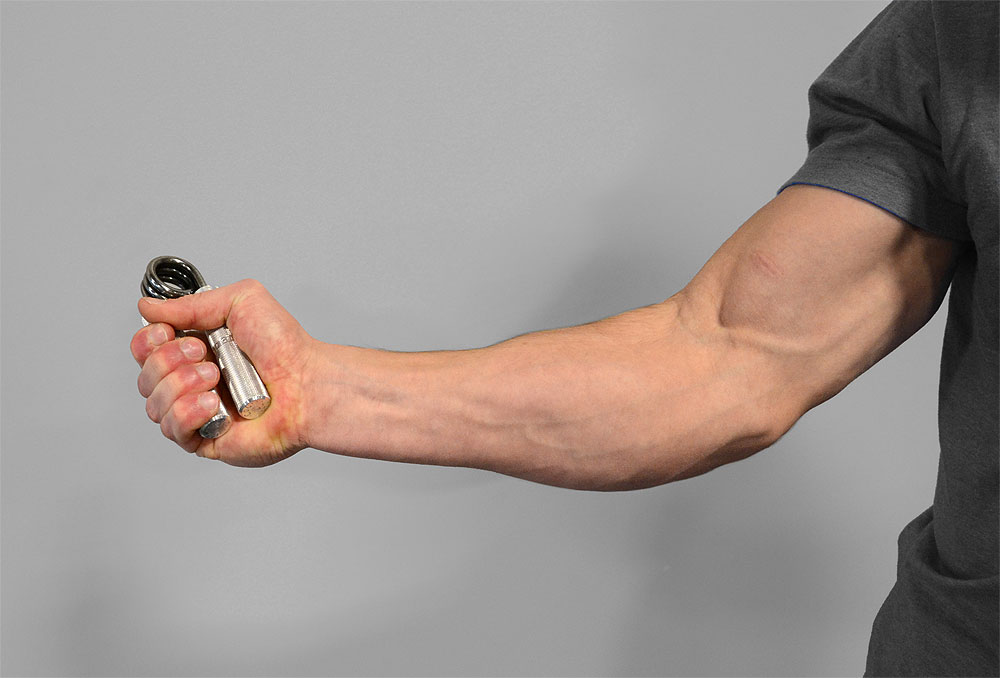
It might seem surprising, but there’s a growing body of research suggesting a strong connection between grip strength and mental well-being. While grip strength is often associated with physical health, it’s becoming increasingly clear that it can also play a role in our emotional and cognitive health.
Grip Strength and Stress Reduction
Maintaining good grip strength can contribute to a sense of calm and reduce stress levels. When we experience stress, our bodies release hormones like cortisol, which can have a negative impact on our mood and cognitive function. Engaging in activities that strengthen our grip, such as squeezing a stress ball or lifting weights, can help to release endorphins, which have mood-boosting effects and counteract the negative effects of cortisol.
Grip Strength and Anxiety
Studies have shown a correlation between grip strength and lower levels of anxiety. Individuals with stronger grips tend to report experiencing less anxiety and have a greater ability to cope with stressful situations. This may be because grip strength is associated with a more resilient nervous system, which can better handle stress and anxiety.
Grip Strength and Overall Mental Health
Maintaining good grip strength can be a valuable tool for improving overall mental health. It can contribute to:* Increased self-esteem and confidence:Feeling physically strong can boost our self-esteem and confidence, leading to a more positive outlook on life.
Improved sleep quality Physical activity, including exercises that strengthen our grip, can improve sleep quality, which is essential for good mental health.
Enhanced cognitive function Studies have shown that grip strength is linked to better cognitive function, including memory, attention, and problem-solving skills.
“Grip strength is a simple, non-invasive measure that can provide valuable insights into overall health, including mental well-being.”Dr. [insert name of relevant expert]
Ultimate Conclusion
Grip strength is more than just a measure of how tightly you can squeeze. It’s a window into your overall health and a powerful tool for improving your quality of life. By understanding the importance of grip strength and incorporating regular grip exercises into your routine, you can take proactive steps towards a healthier and more fulfilling future.
So, start squeezing those hand grippers, pick up heavier weights, and watch as your grip strength, and your overall well-being, soar!


